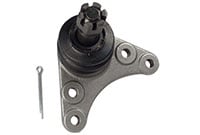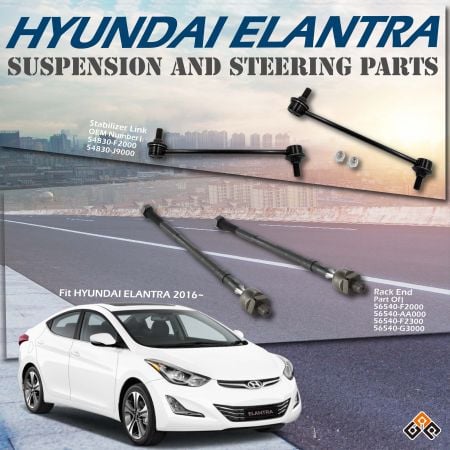How is a Car Alignment Done After Suspension Repairs?
Getting your car’s suspension aligned after repairs isn’t just about making sure the wheels are straight—it’s about keeping your car safe, comfortable, and efficient. Alignment affects everything from tire wear to fuel efficiency and the overall feel of your drive. This guide walks you through what you need to know about maintaining alignment after repairs, so your car drives as smoothly as possible.
Suspension Alignment vs. Wheel Alignment
People often confuse the terms suspension alignment and wheel alignment, but they’re actually the same service with different names. Both refer to adjusting the angles of your wheels and suspension to improve handling, safety, and tire longevity. The only real difference comes down to the type of alignment—whether it’s a two-wheel alignment for the front wheels or a four-wheel alignment that includes both front and rear wheels.
Suspension Alignment: Why is it Important, and Types of Services Available
Suspension alignment is all about adjusting the wheels so they’re positioned properly relative to each other and the road. This helps your car track straight, handle well, and avoid extra wear on tires and suspension parts. Depending on your vehicle, alignment services typically fall into one of these three categories:
- Front-End Alignment
- Thrust Alignmentstraight.
- Four-Wheel Alignment
For the detailed breakdown of each type, check out our other post on.
How to Align for Different Vehicle Types: SUVs, Trucks, and Sedans
Alignment needs can vary quite a bit depending on your vehicle type. Factors like size, weight, and suspension type all play a role in determining the best alignment approach for each vehicle. Here’s a quick look at the unique alignment needs for SUVs, trucks, and sedans:
| Vehicle Type | Alignment Type | Key Considerations |
| SUVs | Four-Wheel Alignment | Higher weight and center of gravity make alignment crucial for stability. Independent rear suspensions in most SUVs mean all wheels need adjustment to handle heavy loads and rough terrain effectively. |
| Trucks | Thrust or Four-Wheel Alignment | Trucks with solid rear axles typically use a thrust alignment to align the front wheels with the rear axle. For trucks with independent rear suspension, a four-wheel alignment is better to balance handling and tire wear, especially when towing or carrying heavy loads. |
| Sedans | Four-Wheel or Front-End/Thrust Alignment | Lighter with a lower center of gravity, sedans benefit from a four-wheel alignment for even tire wear and smooth handling. Older sedans with solid rear axles may only require a front-end or thrust alignment. |
The type of alignment needed isn’t just about vehicle size—it’s also about how you use your vehicle. For instance, SUVs and trucks that frequently tow or drive off-road will benefit from more regular alignment checks to ensure stability and even tire wear. Understanding these differences can help you keep your alignment needs in check based on your vehicle type and use.
Recognizing the Signs of Misalignment
Alignment issues can be sneaky; they often develop gradually, so knowing what to look for can save you trouble down the road. Here are the most common signs your alignment may be off:
- Steering Wheel Off-Center: If your steering wheel isn’t centered when driving straight, it’s a classic sign of misalignment.
- Drifting or Pulling to One Side: If your car has a tendency to drift to the left or right, that’s usually alignment-related.
- Uneven Tire Wear: Notice your tires wearing unevenly? Misalignment is often the culprit.
If you spot any of these, it’s a good idea to have your alignment checked sooner rather than later.
Causes of Misalignment of Suspension Alignment
A lot of things can throw off your alignment, but a few are especially common. Here’s what to watch out for:
| Causes of Misalignment | Description | Effect on Vehicle |
| Potholes and Rough Roads | Hitting potholes, bumps, or other rough terrain can shift alignment angles. | Can throw wheels out of alignment, affecting handling and causing uneven tire wear. |
| Heavy Loads or Off-Roading | Carrying extra weight or frequently driving on rough surfaces puts stress on suspension components. | Adds strain to the suspension, increasing the likelihood of misalignment over time. |
| Worn or Replaced Suspension Parts | Suspension parts wear over time, and when replaced, they may not align perfectly with existing parts. | New or worn parts can disrupt the alignment, leading to handling issues and uneven wear on tires. |
Knowing these causes can help you avoid alignment issues or at least spot them early.
Key Suspension Alignment Angles: Toe, Camber, and Caster
Alignment really comes down to getting a few angles just right. Here’s what each one does:
| Key Suspension Angles | Description | Impact on Vehicle |
| Toe | The inward or outward angle of the wheels when viewed from above. Proper toe alignment ensures the wheels point straight ahead. | Correct toe alignment promotes even tire wear and improves steering responsiveness. Misaligned toe can lead to “scrubbing” on the road, causing premature tire wear. |
| Camber | The tilt of the wheels when viewed from the front, either inward (negative camber) or outward (positive camber). | Helps with stability and handling, especially during turns. Excessive camber in either direction can cause uneven tire wear and handling issues. |
| Caster | The angle of the steering axis when viewed from the side, leaning toward the driver (positive) or away (negative). | Caster provides steering stability and helps the steering wheel return to center after a turn. Incorrect caster can make steering feel less stable and responsive. |
Each of these angles is fine-tuned during alignment to help your car handle well, especially after suspension work.
How Often Should You Schedule an Alignment
For most cars, an alignment check once a year or every 10,000 to 12,000 miles works well. But if you’ve just had suspension repairs or hit something hard, like a curb, it’s smart to get it checked sooner. Regular alignment checks keep your car driving smoothly and prevent early tire wear.
Inside the Alignment Process: How is a Car Alignment Done
A car alignment is more than just a simple adjustment—it’s a precise process that ensures all four wheels are positioned correctly to improve handling, extend tire life, and provide a smooth, safe drive. Here’s a look at how a car alignment is done, from inspection to final adjustments, so you know exactly what goes into keeping your suspension and wheels in perfect harmony.
- Vehicle Inspection:
Technicians check tires and suspension for any signs of damage or wear. - Tire Pressure Check:
Each tire is checked to make sure it’s at the manufacturer-recommended pressure, ensuring consistency during the alignment process. - Alignment Setup:
Sensors or cameras are attached to each wheel and connected to an alignment machine. This equipment reads the car’s current alignment angles, comparing them to the manufacturer’s specifications for the vehicle. - 4. Adjusting the Angles:
Using the alignment machine, the technician adjusts the toe, camber, and caster to factory settings. - 5. Centering the Steering Wheel:
After all adjustments, the technician ensures the steering wheel is perfectly centered, so it aligns with the direction of the wheels. - Final Test Drive:
A quick test drive confirms everything’s set correctly.
This process makes sure your wheels are aligned to the manufacturer’s specifications for safe, smooth driving.
Cost and Time Expectations for an Alignment
Most alignment jobs take about an hour and cost between $100 and $150, depending on where you are and what type of car you have. Though it’s an extra expense, a good alignment after repairs can save you money in the long run by extending the life of your tires and suspension parts. (Prices are for reference only.)
Maintenance Tips to Keep Alignment Intact Longer
To keep your car aligned longer after repairs, a few simple habits can help:
- Avoid Rough Roads When You Can: Potholes and uneven roads can throw off your alignment fast.
- Rotate Tires Regularly: Rotating your tires helps them wear more evenly and keeps your alignment in check.
- Keep Tires Properly Inflated: Proper tire pressure reduces strain on your suspension.
These tips can go a long way in helping your alignment last.
How to Check for Misalignment at Home
While it’s best to leave alignments to the pros, you can still look for signs of misalignment at home:
- Check for Uneven Tire Wear: Look for one side of the tire wearing faster than the other.
- Drift Test: On a flat road, let go of the wheel briefly—if the car pulls to one side, it might be time for an alignment.
- Steering Wheel Position: If your steering wheel isn’t centered when driving straight, alignment may be off.
If you notice any of these, it’s a good idea to get your car checked by a technician.
Choose in the Right Suspension Parts for Your Car Alignment
Keeping your car’s suspension aligned after repairs is key to safe driving, better handling, and making your tires last longer. Regular alignment checks, spotting early signs of misalignment, and sticking to basic maintenance can make a world of difference in how your car drives.
Choosing the right parts plays a huge role here too. With Great Auto Parts, you’re getting high-quality suspension and steering components that are built to fit precisely and stand up to wear, helping your alignment stay intact. Our parts—whether it’s ball joints, tie rods, or control arms—are crafted to meet strict standards, so you’re set up for smoother handling and better control on the road.
Investing in quality parts from Great Auto Parts isn’t just about the immediate fix—it’s about giving your car the solid foundation it needs to handle well, drive safely, and keep alignment issues at bay for the long haul. With the right parts, you’re choosing a smoother, more reliable ride.




